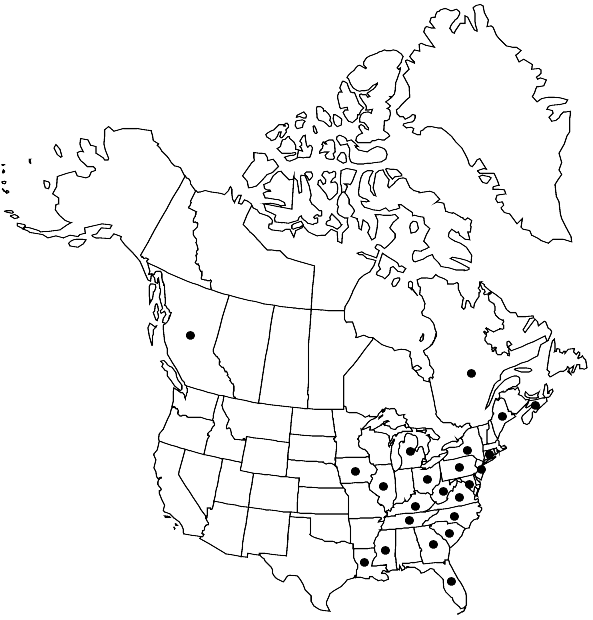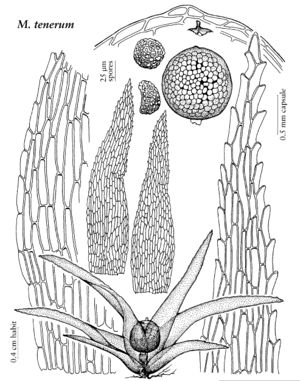Difference between revisions of "Micromitrium tenerum"
Bryologist 71: 116. 1968,.
FNA>Volume Importer |
imported>Volume Importer |
||
| (2 intermediate revisions by 2 users not shown) | |||
| Line 63: | Line 63: | ||
|publication year= | |publication year= | ||
|special status= | |special status= | ||
| − | |source xml=https:// | + | |source xml=https://bitbucket.org/aafc-mbb/fna-data-curation/src/2e0870ddd59836b60bcf96646a41e87ea5a5943a/coarse_grained_fna_xml/V27/V27_955.xml |
|genus=Micromitrium | |genus=Micromitrium | ||
|species=Micromitrium tenerum | |species=Micromitrium tenerum | ||
Latest revision as of 21:29, 5 November 2020
Plants scattered or gregarious in sparse remnants of protonemata, pale to bright green. Stems usually absent, but rarely to 1 mm. Leaves spreading proximally, distally erect and lanceolate to ovate, obovate or ligulate, broadly to slenderly acuminate, less than 2.4 × 0.5 mm, margins plane, entire proximally, distally entire to serrulate. Sexual condition synoicous or dioicous. Capsule dehiscing by a somewhat indistinct ring of cells distal to the equator, orange-brown to black, ± globose with a barely discernable apiculus or with a dome-shaped apical cell; exothecial cells in 1 layer, stomates none. Spores about 100, reniform to globose, with or without a concave proximal face, 27–45 × 20–37 µm, orange-brown to brown or black.
Phenology: Capsules mature summer–spring.
Habitat: Bare soil in old fields, drying ponds, moist or swampy woods, banks of streams
Elevation: low to moderate elevations (0-1000 m)
Distribution

B.C., N.S., Que., Conn., Fla., Ga., Ill., Iowa, Ky., La., Maine, Md., Mich., Miss., N.J., N.Y., N.C., Ohio, Pa., S.C., Tenn., Va., W.Va., West Indies (Puerto Rico, Virgin Islands), Central America (Panama), South America (Brazil), Europe, Asia (China, Japan, Korea, Tibet), Africa (Zimbabwe), Pacific Islands (New Zealand).
Discussion
Many specimens of Micromitrium tenerum include plants with leaves in which two or three cells in a double layer can be found in a median position, just distal to the middle of the leaf. The walls are not differentiated in any way, and their presence does not suggest even a meager costa. As in M. synoicum and M. megalosporum, mature capsules of M. tenerum may persist after the leaves have eroded away. Micromitrium synoicum and M. tenerum are remarkably similar, but are distinguished by stem length and leaf size and shape. Micromitrium tenerum is stemless or has very short stems, and M. synoicum has distinct stems. The somewhat longer leaves of M. tenerum have plane margins that may be almost entire but are usually serrulate distally, while the leaves of M. synoicum are commonly incurved distal to the middle with almost invariably entire margins.
Selected References
None.
